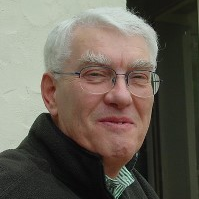Advanced Opportunities and Insights on Novel Catalysts for Electrocatalytic Energy Conversion
A special issue of Catalysts (ISSN 2073-4344). This special issue belongs to the section "Electrocatalysis".
Deadline for manuscript submissions: closed (31 July 2023) | Viewed by 2992
Special Issue Editors
Interests: energy related materials; photocatalysis; electrocatalysis; material characterization; nanomaterials; synthesis; composites
Special Issues, Collections and Topics in MDPI journals
Interests: metal-O2 batteries; catalysts for OER and ORR
Interests: energy storage; solid-state ionics; lithium batteries; thin films
Special Issues, Collections and Topics in MDPI journals
Special Issue Information
Dear Colleagues,
The key challenge to developing sustainable energy systems lies heavily in the rational design and controllable synthesis of efficient, selective, and durable electrocatalysts for a wide range of electrochemical reactions, including hydrogen evolution reaction (HER), oxygen evolution reaction (OER), oxygen reduction reaction (ORR), carbon dioxide reduction reaction (CO2RR), and nitrogen reduction reaction (NRR), which occur in different energy conversion devices (e.g., fuel cells, metal–oxygen batteries, and photoelectrochemical cells). Significant progress has been made to understand the relationships between preparation, structures, properties, and performance of electrocatalysts. However, in-depth insight into designing active electrocatalysts for targeted reactions is still required, and synthesizing novel electrocatalysts with excellent performance is also desirable. In situ and operando characterizations and/or characterizations using synchrotron and neutron facilities have shown obvious contributions to the field of electrocatalysis. This Special Issue aims to cover the most recent advances in electrocatalysts for different energy coversion applications, which includes novel design and sysnthesis of electrocatalysts to acieve component manipulation, morphology control, or structure engineering, advanced characterizations of electrocatalysts using state-of-the-art microscopic and spectroscopic techniques, the study of electrocatalytic mechanism, and the application exploration of electrocatalysts. Perspectives and reviews about challenges and opportunities for the electrocatalyst development are also highly appreciated.
Dr. Jiefang Zhu
Dr. Jia Liu
Prof. Dr. Christian Julien
Guest Editors
Manuscript Submission Information
Manuscripts should be submitted online at www.mdpi.com by registering and logging in to this website. Once you are registered, click here to go to the submission form. Manuscripts can be submitted until the deadline. All submissions that pass pre-check are peer-reviewed. Accepted papers will be published continuously in the journal (as soon as accepted) and will be listed together on the special issue website. Research articles, review articles as well as short communications are invited. For planned papers, a title and short abstract (about 100 words) can be sent to the Editorial Office for announcement on this website.
Submitted manuscripts should not have been published previously, nor be under consideration for publication elsewhere (except conference proceedings papers). All manuscripts are thoroughly refereed through a single-blind peer-review process. A guide for authors and other relevant information for submission of manuscripts is available on the Instructions for Authors page. Catalysts is an international peer-reviewed open access monthly journal published by MDPI.
Please visit the Instructions for Authors page before submitting a manuscript. The Article Processing Charge (APC) for publication in this open access journal is 2700 CHF (Swiss Francs). Submitted papers should be well formatted and use good English. Authors may use MDPI's English editing service prior to publication or during author revisions.
Keywords
- electrocatalysis
- energy conversion
- energy storage
- batteries
- fuel cells
- photoelectrochemistry







